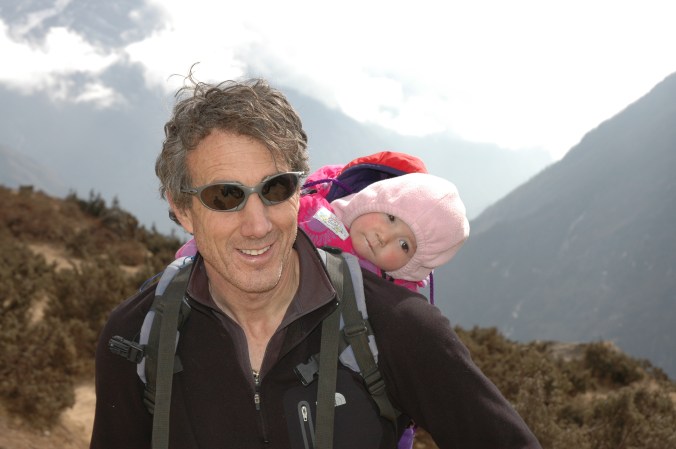Years ago, my husband, Pete, and I made a promise to ourselves: We’d try to give our children the best real-world alternatives to video games and virtual reality we could find because reality itself is so much more fulfilling. To that end, our children have grown up on the trail. Daily lessons are often as blunt as the hard-won objective of simply reaching the next village without incident.

Pete with 3-year-old Finn, on the trail up the Kali Ghandaki River to Jomsom. © Liesl Clark
Ancient castles, fortresses, and real-world kings are normal for kids who’ve played amongst crumbling fortress walls that intermingle with cold clouds, echoes of the past tickling us in the driving wind.
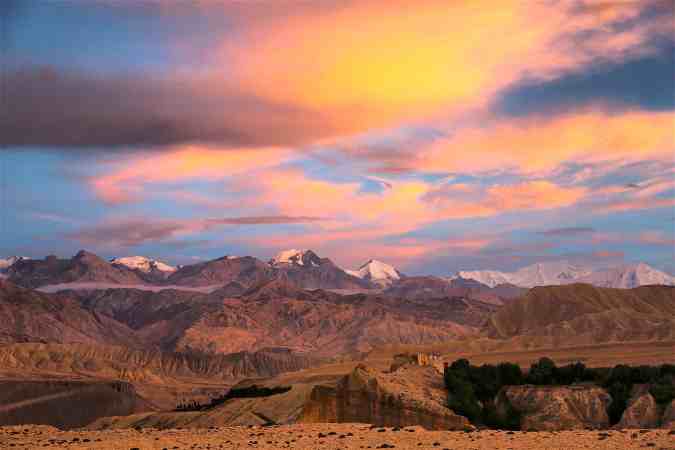
The winter palace in Tsarang, Upper Mustang, crowned by the Annapurnas. © Liesl Clark
If our children stayed at home, those castles and forts would be grand designs crafted from code in video games they play on their devices. Yet today they can work and play amidst the real thing: Tombs of the ancient dead, haul bags filled with faunal and human bones to sort and clean, artifacts hewn from leather, silk, iron, copper, silver, and bronze, some dating as far back as 2800 years.
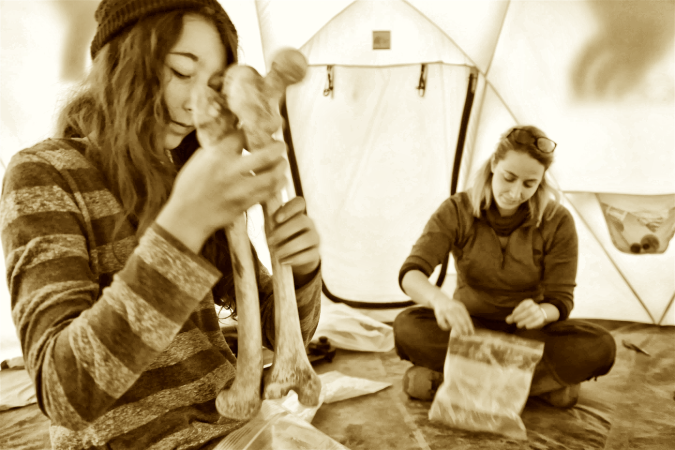
10-year-old Cleo bagging two femurs, with Marion Poux overseeing her work. © Liesl Clark
Nothing in those video games can compare. As parents, we make our choices, whether we allow our children glimpses into our professional lives and our special passions. They, in turn, feel empowered to follow their own dreams, ask their own questions, and seek the truth.

Finn, now 13, connects easily with his friends in Samdzong. He also flies all of our drone aerials. © Liesl Clark
This drive is what makes us human, what pushed the early pioneers to find shelter amongst the world’s most hostile and glorious mountains. These early settlers brought their children with them, because the alternative was unbearable.

Leaving the kids at home, so we can do our work in the Himalayas, is unthinkable to us. © Pete Athans
On January 4th, 2017, our film, “Secrets of the Sky Tombs,” about our quest to find the first peoples of the Himalaya will air 9pm ET/8 Central on PBS’s NOVA. The film will also be broadcast in the upcoming months on France 5 in France and National Geographic Channel worldwide. It’s been a decade-long endeavor, and we’ll likely continue for another, as unknown caves, more ancient human DNA, and new questions need to be explored.
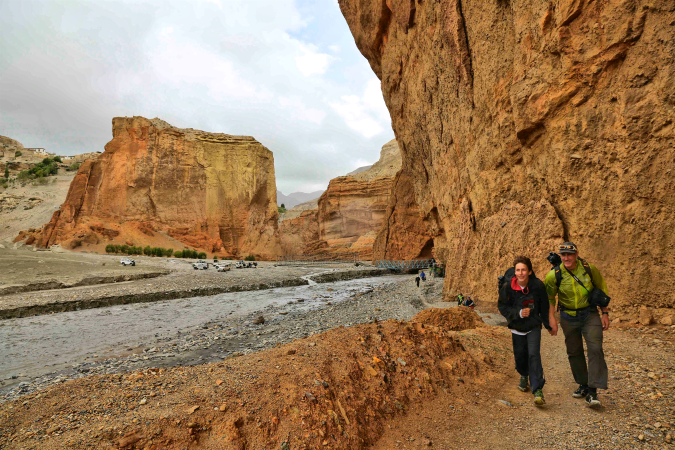
Finn & Pete below Tsaile, headed back to Jomson, dreaming up the next filming expedition. © Liesl Clark
But if there are “secrets,” (as the film’s title suggests) to be uncovered, they’re the clues to success of a people who foraged for what they could off the land, who found meaning in the struggle, and who relied on their clan and their fellow villagers for the bare essentials to survive. Community and one’s lineage is the secret to strength in times of hardship, in the face of the extremes.
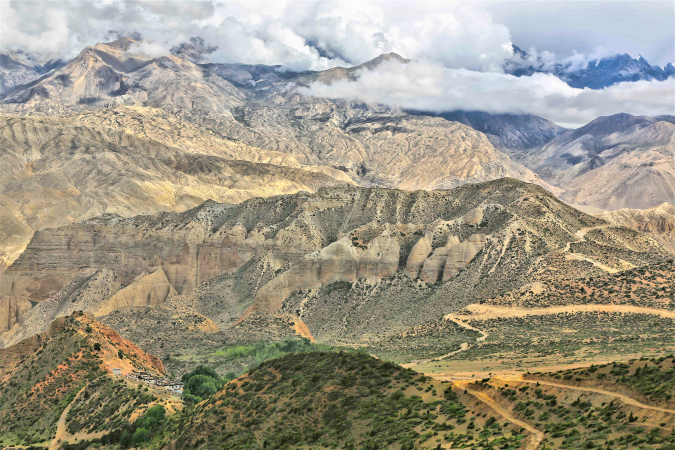
Looking down on the village of Samar, Upper Mustang. © Liesl Clark
This lesson is not lost on us today.


